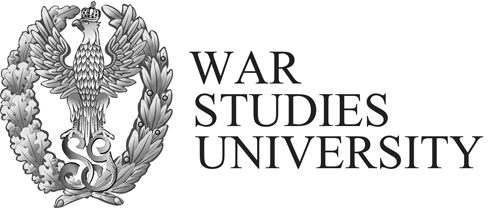Online first
Current issue
All issues
About
Aims and scope
Peer review process
Publication policy and ethics & malpractice statement
Editorial Board
Reviewers
Publisher
Guide for authors
Call for papers
Book Reviews
Special Issues Archive
New and emerging technologies in defence education, training and governance
Factors that influence the process of migration of youth: A case study of Kosovo
1
MIT University – Skopje
Publication date: 2017-12-31
Security and Defence Quarterly 2017;17(4):48-73
KEYWORDS
ABSTRACT
There is no unique definition of migration nor is a simple classification of migration possible
either, because of the existence of multi-dimensional migration criteria such as cause,
length, distance, direction, volume, velocity, migratory status etc. The purpose of the paper is to develop significant data that will provide insightful conclusions for the factors that contribute to high migration of youth from Kosovo. The
qualitative empirical research is meant to find out the extent to which youth were satisfied
with the way of life in Kosovo, what the reasons were for that, and whether that would
change their way of life.
REFERENCES (15)
1.
Bogue, D.J., 1959. Internal Migration. In Ph. M. Hauser and O. D. Duncan (eds.), The Study of Population. University of Chicago Press, Chicago.
2.
Clarke, J.I., 1972. Population Geography. Second edition. Pregamon Press, Oxford. doi: 10.1016/B978-0-08-016853-1.50008-8.
4.
Ceawford, M. H. and Campbell, C. B., 2012. Causes and Consequences of Human Migration: An Evolutionary Perspective. Cambridge University Press, Cambridge. doi: 10.1017/CBO9781139003308.
5.
Dobruna, Z. and Hollaj, L., 2015. An overview of migrations of Kosovars into the EU: Migration as Multifaceted Phenomenon. Institute for Development Policy.
6.
Fernie, J. and Pitkethly, A., 1985. Resources, environment and policy. Harper and Row, London.
7.
Graham, D.T. and Poku, N.K., 2000. Migration globalization and human security. Routledge, London.
8.
Hansen, R., 2003. Migration to Europe since 1954: Its History and its Lessons. The Political Quarterly, 74(1), 28-38. doi: 10.1111/j.1467-923X.2003.00579.x.
9.
Ivelvs, A. and King, R.M., 2015. Kosovo – Winning its Independence but Losing its Pepole? Recent Evidence on Emigration Intentions and Preparedness to Migrate. International Migration Journal, 53(5), 84-103.
doi: 10.1111/j.1468-2435.2011.00716.x.
10.
Kosovo Agency of Statistic, 2014. [1 Febr 2017] http://ask.rks-gov.net/en/koso...- agencyof-statistics.
11.
King, R., Piracha, M. and Vullnetari, J., 2010. Migration and development in transition economies of Southeastern Europe: Albania and Kosovo. Eastern European Economics, 48 (6), 3-16. doi: 10.2753/EEE0012-8775480601.
12.
Kosovo Human Development Report, 2014. Migration as a force for development. Swiss Cooperation Office Kosovo.
13.
Lee, E.S., 1966. Theory of Migration. Demography 3(1), 47.
doi: 10.2307/2060063.
14.
Loxha, A. and Elshani, D., 2015. Who are the Kosovars most willing to migrate to EU countries? – An empirical perspective. Prishtina.
15.
Ratha, D., Mohapatra, S. and Scheja, E., 2011. Impact of migration on economic and social development: a review of evidence and emerging issues. Policy Research Working Paper. doi: 10.1596/1813-9450-5558.
CITATIONS (6):
1.
A Statistical Analysis of the Migration Process: A Case Study—Romania
Rodica Pripoaie, Carmen-Mihaela Cretu, Anca-Gabriela Turtureanu, Carmen-Gabriela Sirbu, Emanuel Marinescu, Laurentiu-Gabriel Talaghir, Florentina Chițu, Daniela Robu
Sustainability
Rodica Pripoaie, Carmen-Mihaela Cretu, Anca-Gabriela Turtureanu, Carmen-Gabriela Sirbu, Emanuel Marinescu, Laurentiu-Gabriel Talaghir, Florentina Chițu, Daniela Robu
Sustainability
2.
How should companies manage their employees’ emigration intentions? A serial mediation model
Festim Tafolli, Kujtim Hameli
Industrial and Commercial Training
Festim Tafolli, Kujtim Hameli
Industrial and Commercial Training
3.
“Brain drains”: Evaluating international transfer intention among international business program graduates
Mohd Fitri Mansor, Lee Li Xuan, Noor Hidayah Abu, Irza Hanie Abu Samah
PROCEEDINGS OF THE 6TH INTERNATIONAL CONFERENCE ON COMPUTING AND APPLIED INFORMATICS 2022
Mohd Fitri Mansor, Lee Li Xuan, Noor Hidayah Abu, Irza Hanie Abu Samah
PROCEEDINGS OF THE 6TH INTERNATIONAL CONFERENCE ON COMPUTING AND APPLIED INFORMATICS 2022
4.
Empowering migration solutions: The impact of evidence-based policymaking in Kosovo
Mentor Nimani, Arbenita Sylejmani Nimani
Academic Journal of Business, Administration, Law and Social Sciences
Mentor Nimani, Arbenita Sylejmani Nimani
Academic Journal of Business, Administration, Law and Social Sciences
5.
What do urban dwellers and people with dual residence do in rural areas of Tanzania?
Mwabless Malila, Nsajigwa Mwalupani, Fredrick Mfinanga
SCIENCE MUNDI
Mwabless Malila, Nsajigwa Mwalupani, Fredrick Mfinanga
SCIENCE MUNDI
6.
Theoretical Analysis of Long-Distance International Marriage Migration
Coşkun Sağlık
Habitus Toplumbilim Dergisi
Coşkun Sağlık
Habitus Toplumbilim Dergisi
Share
RELATED ARTICLE
We process personal data collected when visiting the website. The function of obtaining information about users and their behavior is carried out by voluntarily entered information in forms and saving cookies in end devices. Data, including cookies, are used to provide services, improve the user experience and to analyze the traffic in accordance with the Privacy policy. Data are also collected and processed by Google Analytics tool (more).
You can change cookies settings in your browser. Restricted use of cookies in the browser configuration may affect some functionalities of the website.
You can change cookies settings in your browser. Restricted use of cookies in the browser configuration may affect some functionalities of the website.




